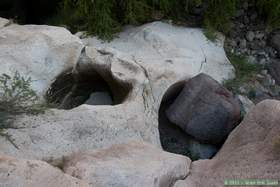avodude
Lil-Rokslider
mallacootasmoothie, whoops thought you were in NZ not Australia. Duh. We could actually narrow it down as to what type of plutonic rock your round rock is by using a Q, A, P triangle. It is the upper half of the QAPF triangle attached. The lower triangle of rock types are pretty rare. The QAP triangle (upper half) uses a ratio of Quartz, Alkali Feldspar and Plagioclase Feldspar to determine what kind of plutonic rock it is. Saying it was a granodiorite was a safe bet because most of the continental crust is made up of granodiorite. Australia is pretty unique in that it doesn't have a lot of tectonic activity. You must have discovered an area where most of the sedimentary rock had been eroded away leaving a granite type bedrock. Some of the oldest rocks on earth have been found in Australia. Last I saw was a zircon that they dated to 4.4 billion years ago in the Jack Hills region.
We geologists have a cool name for the process that made your round rock and the bowl that it formed but I cannot remember it. Pothole was a lame substitute. That can be a pretty common find around rivers with a certain kind of geology.

We geologists have a cool name for the process that made your round rock and the bowl that it formed but I cannot remember it. Pothole was a lame substitute. That can be a pretty common find around rivers with a certain kind of geology.

Attachments
Last edited:












